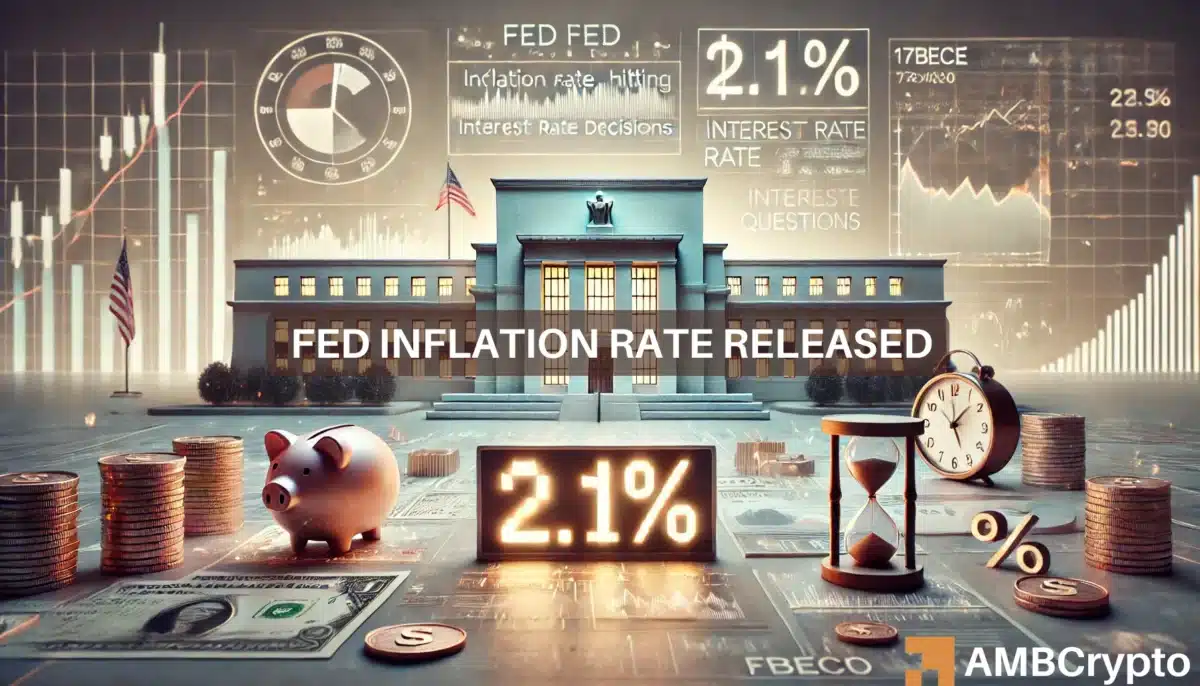Bitcoin – Identifying the impact of Fed’s inflation rate

- September’s inflation rate reached 2.1%, nearing the Fed’s target of 2%.
- Bitcoin’s value dropped to $69,263.81 amid profit-taking following a recent rally.
Recent data shows the Federal Reserve’s key inflation rate reached 2.1% in September, meeting expectations.
This rate was inching closer to the central bank’s target.
Fed inflation rate analyzed
A Commerce Department report on the 31st of October showed a slight uptick in inflation.
The personal consumption expenditures (PCE) price index rose by 0.2% on a seasonally adjusted basis for the month.
This twelve-month inflation rate of 2.1% aligned with Dow Jones projections. It suggested a steady movement toward the Fed’s inflation goals amid ongoing economic assessments.
PCE data serves as the Federal Reserve’s main indicator of inflation. Also, policymakers closely watch additional metrics to guide their decisions.
The Feds aim to maintain an annual inflation rate of 2%. This target has not been achieved since February 2021.
Core inflation remains a concern for the Feds, with a recorded rate of 2.7%. This marked a 0.3% hike from the previous month.
What’s more?
As per a post by Wu Blockchain,
The U.S. core PCE price index for September was 0.3% MOM, in line with expectations of 0.3%, and the previous value was revised from 0.1% to 0.2%.
It further added,
“PCE inflation index has seen the largest monthly increase since April, supporting the Fed’s slowing pace of interest rate cuts after a sharp cut last month.”
As these figures unfold, markets anticipate the Fed to reduce the short-term borrowing rate at their meeting planned for the next week.
Impact on the crypto market
The recent release of key inflation data led to profit-taking in the cryptocurrency market. Bitcoin [BTC] rallied to $73,000—its highest since March.
However, BTC’s momentum did not sustain, dropping to $69,263.81, at press time. This was reflected by a 4.58% decline over 24 hours.
The cryptocurrency market’s decline was not just limited to Bitcoin.
On the 1st of November, the global crypto market capitalization fell to $2.33 trillion, representing a 1.75% decrease over 24 hours, according to CoinMarketCap.
In 2022, BTC fell below $20,000 as the entire market faced a downturn. This fall was fueled by worries over the Federal Reserve’s approach to interest rate increases.
But, in 2023, Bitcoin saw a 1% boost following FOMC meetings, with gains reaching 3% after a week.
What lies ahead?
As the Federal Reserve prepares for its upcoming meeting, market speculation mounts about further rate reductions.
Following a half-percentage-point cut in September, adjusting the rate to 4.75% to 5.00%, policymakers anticipate quarter-point decreases in November and December.
The Fed aims for a policy rate of 3.4% by the end of 2025. They seek stability at 2.9% through 2026 and 2027.
This reflects a deliberate approach to achieve a neutral interest rate amid economic headwinds.

![Tron [TRX]](https://ambcrypto.com/wp-content/uploads/2025/08/Tron-TRX-400x240.webp)




